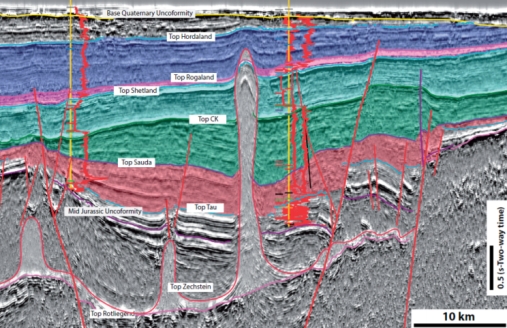Geophysical methods are used to image, map, and analyse structures from the crust to the shallow subsurface. Gravimetry and magnetic mapping, reflection seismic, electromagnetic reflection patterns and more are combined to analyse the structures, layering and contents of rock volumes in the subsurface.

Petrophysics studies the physical, chemical, electrical, acoustic, and hydraulic properties of rocks and their contained fluids using well log data. Well logging is the sophisticated method used routinely in different phases of CO2 sequestration and hydrocarbon exploration, field development, and monitoring. It gives us a continuous record of a downhole that provides a detailed subsurface picture of gradual and abrupt changes in rock properties from one bed to the next. It allows the subsurface geoscientist to map formation depths, lateral distributions, and thicknesses and then identify conditions that could trap hydrocarbons or store CO2.
Rock Physics contains a range of techniques that relate the reservoir, seal, and source rock properties (e.g., lithology, porosity, permeability, saturation) at certain physical conditions (e.g., pressure, temperature) with the corresponding seismic/elastic properties (e.g., acoustic impedance, velocity ration, incompressibility, rigidity). Rock physics reduces exploration risk and improves production hydrocarbon and CO2 injection forecasting.
Quantitative Seismic Interpretation and Geomechanics focus on how seismic, rock physics and petrophysics can be applied to predict in-situ stresses from seismically derived attributes. The method helps integrate multidisciplinary techniques of petrophysical analysis of well log data, laboratory investigation, rock physics diagnostics and modeling, seismic multi-attribute analysis, and inversion. The critical applications are quantitatively evaluating CO2 storage and hydrocarbon reservoirs, seals, source rocks, faults, and under- and over-burdened rocks.